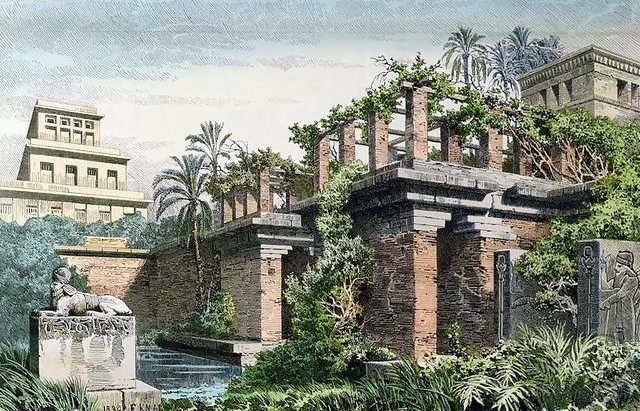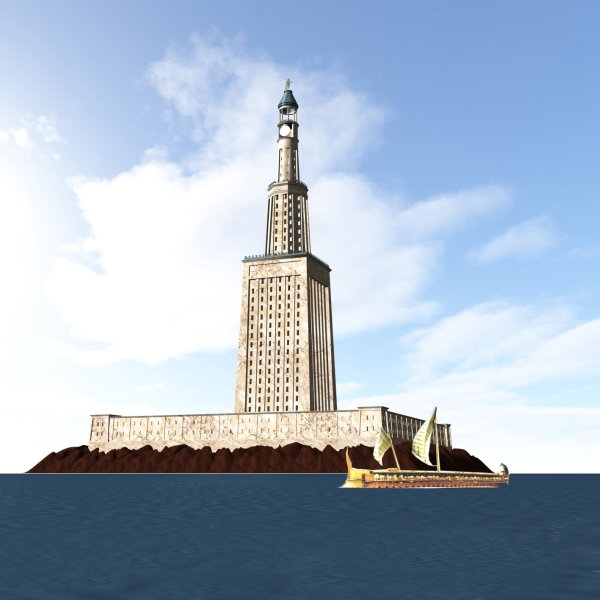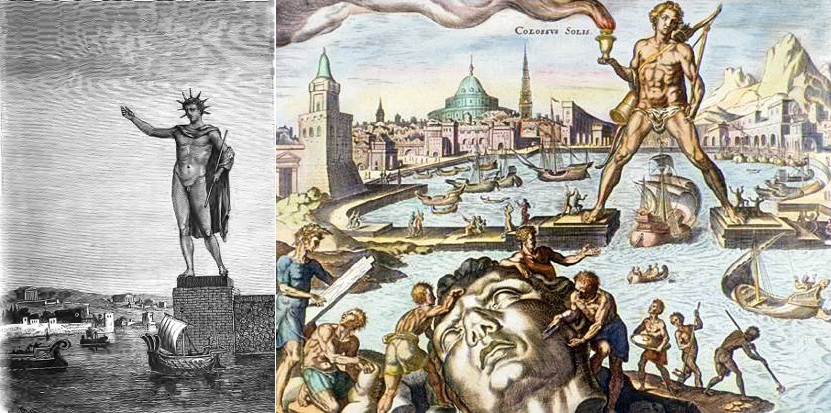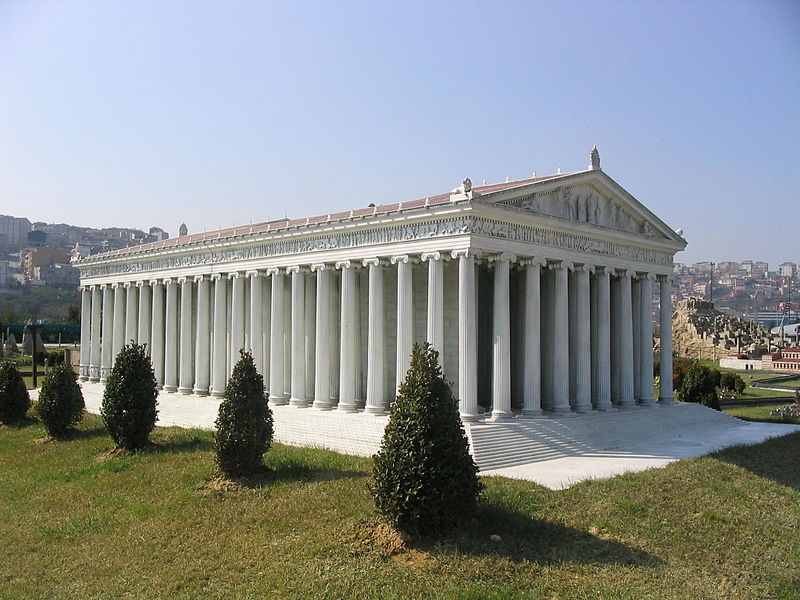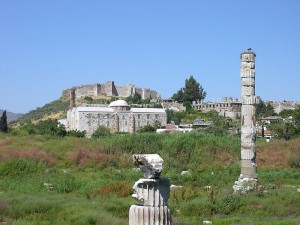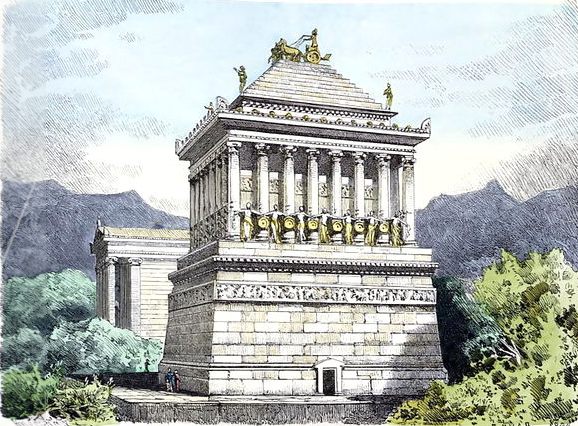The Liner Notes of Ancient History #2: Seven Wonders of the Ancient World
 When I was a kid, I heard about the Seven Wonders of the World on a semi-regular basis. But, other than the Great Pyramid at Giza (though I always thought the Pyramids were in Cairo proper because I knew nothing of Egyptian geography), I had no idea what the other six wonders were. I did know that the other six were no longer standing, however, so I suppose that’s how I could never remember them.
When I was a kid, I heard about the Seven Wonders of the World on a semi-regular basis. But, other than the Great Pyramid at Giza (though I always thought the Pyramids were in Cairo proper because I knew nothing of Egyptian geography), I had no idea what the other six wonders were. I did know that the other six were no longer standing, however, so I suppose that’s how I could never remember them.
Since becoming an adult, though (<cough>25 years ago<cough>), I’ve been more interested in learning about the others, but still, for some reason, never really sought out the information. Despite my interest. Odd. Though I did learn a bit by playing the game 7 Wonders (and you can do the same – it’s a fun game). So I decided to write about them in one convenient package, for you to learn as well.
Here they are, the Seven Wonders of the Ancient World, in no particular order.
The Great Pyramid at Giza
The only ancient wonder to still be standing today, the Great Pyramid at Giza, built to entomb Egyptian Pharaoh Khufu, stands with two other large pyramids (and a couple of small ones) along the Nile River, north of Cairo. Built as royal tombs between 2700 B.C. and 2500 B.C., the interiors of the three large pyramids hold trick passageways to thwart grave robbers (which didn’t help). Archaeologists think that much looting was done in the couple hundred years after they were built. Fortunately, there were still some artifacts left for modern day archaeologists, from which we learn a lot about ancient Egyptian culture. After it was built, the Great Pyramid was the tallest man made structure on Earth for the next 4000 years.
The Hanging Gardens of Babylon
Several descriptions exist of the famous Hanging Gardens of Babylon, but sketches just reflect guesses of what they looked like. The ancient Greek poets said that they were built along the Euphrates River (modern day Iraq) by King Nebuchadrezzar II about 600 BC, though their information wasn’t firsthand. The gardens were supposedly dozens of feet in the air, planted on terraces to make the king’s lover Amytis less homesick for her more lush homeland. This would have necessitated water pumps and other water-related apparatuses, and many people believe that the gardens were actually fictional.
The Lighthouse of Alexandria
This is my favorite of the Ancient Wonders of the World. The depictions I’ve seen are just so… Pretty. I just love it. The square base, all the windows, the tiers…
Built on the island Pharos near Alexandria around 270 BC, this lighthouse helped guide ships into and out of the busy port. Designed by Greek architect Sostratos and standing about 400 feet tall, the lighthouse was depicted on ancient coins, so we have some idea of what it looked like. Destroyed in a series of earthquakes, remnants of the lighthouse have been found on the bottom of the Nile River.
The Colossus of Rhodes
There is a lot of controversy about what this statue actually looked like. Did it straddle the waterway? Did it not? My money is on “not”. But since the earthquake of 226 BC toppled the statue, we don’t know what it actually looked like. Regardless, it did stand, and it guarded the harbor at Rhodes, Greece, starting in 280 BC. Measuring in at about 100 feet tall, this bronze statue was built to celebrate Rhodes’ recent victory over the ruler of nearby Cyprus. After the earthquake, though, the statue remained on the ground for about 800 years, and was even a tourist attraction for a while.
The Statue of Zeus at Olympia
The statue of Zeus, located in the Temple of Zeus at Olympia, the site of the ancient Olympic games, was built around 450 BC. Sphinxes held up the arm rests of Zeus’s chair, and he was adorned with gold and ivory. The statue was about 40 feet tall, reaching almost to the top of the temple. Zeus inhabited the temple for more than 800 years, when he was possibly moved to a temple in Constantinople, later being destroyed by fire.
The Temple of Artemis at Ephesus
There seem to have been more than one Temple of Artemis, with the first burning down and being rebuilt. The rebuilt version was three times the size of the Parthenon, was built in 350 BC, and had 127 sixty-foot columns and a slew of marble steps. It may have had a wood tile roof, or it may have had no roof. The building was used both as a place of worship and as a marketplace. It also had artwork and sculpture inside, I’m sure making it a pleasant place to be. The recreation above is quite beautiful, making me want to frolic among its columns. The original was later destroyed by the Ostrogoths in 262 AD. Some of the marble columns were dug up in the 1860s in a nearby river.
The Mausoleum at Halicarnassus
This ancient wonder was a tomb built by Artemisia for her husband, the king of Carnia, who was named Mausolus. (That explains where the word “mausoleum” comes from, eh?) Mausolus died in 353 BC, and was apparently also Artemisia’s brother. The building was built overlooking the city of Halicarnassus, was made of white marble, and was likely about 135 feet tall. It was a mix of styles with plenty of ornate decoration and details, with columns, friezes, statues, and more. It was mostly ruined by earthquake (see the trend here?) in the 1200s, with bits of it being later used in building a castle. In 1846, one of the friezes was taken out of the castle and it is now in the British Museum.
Which of the Seven Wonders of the Ancient World is your favorite?


